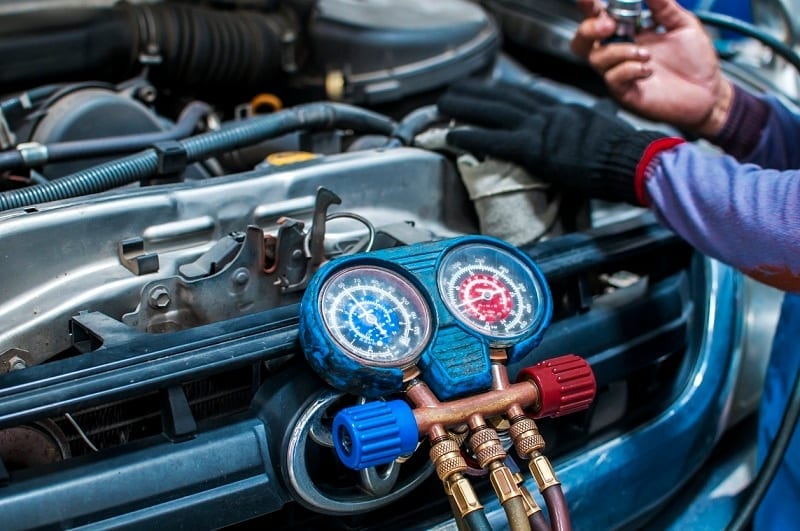
The principle of operation and maintenance of air conditioners
Content
An air conditioning system helps keep the car cool and ventilated. But how does it really work? What needs to be done to ensure the maintenance of an adequate condition of this car system?
To understand how an air conditioning system works, you need to learn a number of principles. The first and most basic refers to 3 states of matter: gaseous, liquid and solid.
We can meet water in any of these 3 states of aggregation. If enough heat is transferred to a liquid, it changes to a gaseous state. And vice versa, if with the help of some kind of cooling system, we absorb heat from liquid water, it will turn into ice, that is, it will turn into a solid state. The transfer or absorption of heat of an element is what allows a substance to move from one state of aggregation to another.
Another principle to understand is the boiling point, the point at which the vapor pressure of a liquid is equal to atmospheric pressure. This moment also depends on the pressure under which the substance is located. In this sense, all liquids behave in the same way. In the case of water, the lower the pressure, the lower the temperature at which it boils and turns into vapor (evaporation).
How are these principles applied in car ventilation and air conditioning systems?
The principle of evaporation is exactly the principle that is used in air conditioning systems for vehicles. In this case, water is not used, but a light boiling substance with the name of the refrigerant agent.
To cool something, it is necessary to extract heat. These effects are embedded in the automotive cooling system. The refrigerant agent circulates in a closed system and constantly changes the state of aggregation and liquid to gaseous and vice versa:
- Compresses in a gaseous state.
- Condensed and gives off heat.
- Evaporates when pressure drops and absorbs heat.
That is, the purpose of this system is not to generate cold, but to extract heat from the air entering the car.
Tips for maintaining an air conditioning system
One point to consider is that the Air Conditioner system is a closed system, so everything that enters it must be controlled. For example, it must be controlled that the coolant agent must be clean and compatible with the system.
Also, do not allow moisture to enter the circuit. Before filling the circuit, it is necessary to completely dump the agent that was used and make sure that the pipes are dry.
One of the key elements in maintaining an air conditioning system is a dust filter. This element prevents the ingress of particles and impurities from the air entering the passenger compartment. A faulty condition of this filter entails not only a decrease in comfort in the cabin, but also a decrease in the volume of forced air through the ventilation and air conditioning system.
To properly maintain air conditioning systems, it is recommended that you use a disinfectant every time you replace the filter. It is a bactericidal cleaner, a spray that leaves a pleasant smell of mint and eucalyptus, and is especially suitable for cleaning and disinfecting an air conditioning system.
In this article, we examined some of the basic principles of a car’s air conditioning system, and we also gave you some tips for maintaining an air conditioning system.
Questions and answers:
How does an auto air conditioner compressor work? Its principle of operation is the same as that of a conventional compressor in a refrigerator: the refrigerant is strongly compressed, sent to a heat exchanger, where it condenses and goes to a dryer, and from there, in a cold state, to an evaporator.
Where does the air conditioner get the air from in the car? To supply fresh air, the air conditioner uses the flow entering the engine compartment and passing through the cabin filter into the passenger compartment, as in a conventional car.
What does Auto mean on an air conditioner in a car? This is an automatic regulation of the operation of an air conditioner or heating. The system maintains the set temperature in the passenger compartment by cooling or heating the air.
